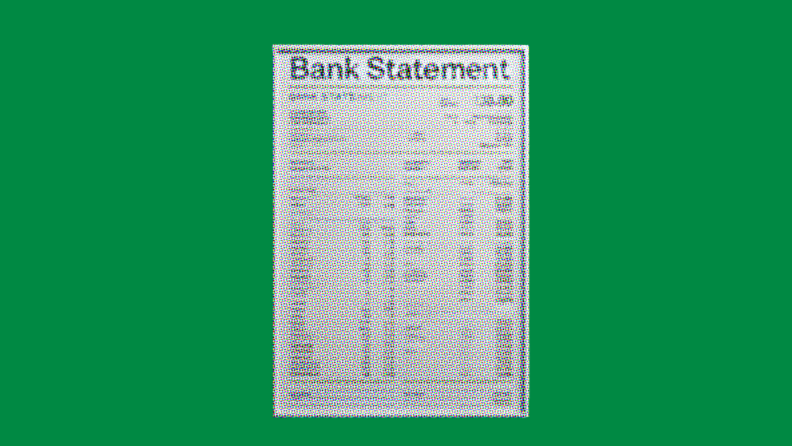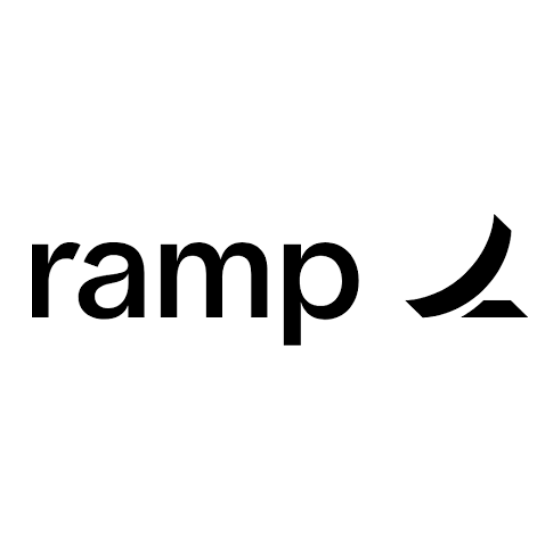Understanding Reconciliation: Bank statement reconciliation compares your internal financial records with your bank's statement to ensure all transactions align.
Navigating the Reconciliation Process: To reconcile effectively, you need a bank statement, your ledger, and preferably accounting software to ease and automate the reconciliation process.
Practicing Reconciliation: Most businesses reconcile their statements once per month, but this isn't a hard and fast rule. Depending on your business size and volume, you can reconcile more or less frequently.
How To Reconcile a Bank Statement
Here's the process I used to create a bank reconciliation statement. Remember, you don’t need to perform reconciliation manually. Software can do that for you.
But, hey, I get it if you’re interested in understanding how a bank reconciliation statement is prepared, to help you analyze it more effectively.
1. Gather Resources
You need bank statements for the period of reconciliation, as well as the internally maintained account of the company’s bank account.
2. Match Deposits and Withdrawals With Debits and Credits in the Cash Account
Deposits and receipts appear on the credit side of the bank account in your ledger, while withdrawals and payments appear on the debit side. Match each transaction in the bank statement with those in the bank account in your ledger.
3. Find Differences
Transactions that are missing from either your bank statement or your ledger are the differences you need to account for. Coming back to the example of a check that’s been sent but not cleared, you’d record the transaction in the bank reconciliation statement.
Differences may be of the following types:
- Temporary: Temporary differences adjust automatically over time and don’t require you to pass a journal entry. For example, uncleared checks will clear at some point.
- Errors and omissions: Permanent differences result from omitted transactions or errors when recording the transactions. To fix a permanent difference, you need to pass a journal entry. For example, if you haven’t recorded bank fees, you’ll need to pass a journal entry because the fee isn’t going to be reversed.
4. Pass Adjusting Journal Entries
Pass a journal entry for errors and omissions you found during the previous step. This will ensure your accounting records are accurate. Temporary differences will diminish over time.
Bank Reconciliation Example
Suppose you have $15,250 in your bank account as of December 31. The book balance of your bank account on the same day is $15,425. Comparing the bank statement and bank account in your general ledger reveals the following differences:
- Checks received but not deposited (also called deposit in transit): $925
- Checks issued but not cleared: $1,050
- Bank service fee: $200
- Interest income: $500
- Overdraft fee: $100
- NSF checks: $500
Here’s what the bank reconciliation statement would look like based on this information:
XYZ Company
Bank Reconciliation Statement
Quarter Ended December 31, 2023
| Bank statement balance, December 31, 2023 | $15,250 |
| Add: Deposit in transit | $925 |
| Deduct: Outstanding checks | ($1,050) |
| Adjusted bank balance | $15,125 |
| Cash balance as per accounting records, December 31, 2023 | $15,425 |
| Add: Interest income | $500 |
| Deduct: Bank service fee | ($200) |
| Deduct: Overdraft fee | ($100) |
| Deduct: NSF checks | ($500) |
| Adjusted book balance | $15,125 |
If the adjusted balances match, you’ve prepared the bank reconciliation statement correctly in most cases — rarely, the adjusted balances may match because of arithmetic or other errors even when you haven’t prepared the statement correctly. And don’t forget to pass the journal entries for errors and omissions.
What You Need To Reconcile a Bank Statement
Before you get started, here's what you need two things to reconcile a bank statement:
- Bank statement (of course)
- The bank account in your ledger that includes transactions like deposits, withdrawals, and cleared checks
I’d also argue that an accounting software solution is arguably necessary, to automate the bank reconciliation process.
Who’s Involved in Bank Reconciliation?
The main participants in bank reconciliation include:
- Accountant or bookkeeper: Your company’s accountant or bookkeeper prepares the bank reconciliation statement.
- Bank: You need monthly statements from your bank to perform reconciliation. You can give the bank standing instructions to automatically send a statement every month, or request it on an as-needed basis.
- Treasurer or financial officer: If you’re reading this, then this person could be you. This is a qualified professional from your company, who will review the reconciliation statement to ensure all discrepancies are addressed.
Other participants include:
- Internal auditor: The internal auditor may review the reconciliation process to check that effective controls are in place and being followed.
- External auditor: An external auditor may review the reconciliation statement when assessing the company’s financial statements.
What Is a Bank Statement?
A bank statement is a monthly summary from your bank that shows all the money going in and out of your account—like deposits, withdrawals, and any fees. It also lists your starting and ending balance for that period.
Think of it as a financial snapshot that helps you keep track of your spending, catch mistakes, or spot anything unusual. Whether you're applying for a loan or just trying to stick to a budget, reviewing your bank statement regularly can really help you stay on top of your money.
How Often to Reconcile Bank Statements
Banks typically issue statements monthly, which makes monthly a standard frequency for bank reconciliations. It also ensures you’re not letting discrepancies, errors, or fraudulent transactions linger for too long.
Monthly reconciliation is not a hard rule. Depending on the volume of transactions and your business preferences, you may choose to prepare bank reconciliation statements daily, weekly, or quarterly.
Best Practices When Reconciling a Bank Statement
Here are some best practices to follow when reconciling a bank statement:
1. Maintain Detailed Documentation
Organize and store transaction receipts, invoices, deposit slips, and other relevant documents you might need for reconciliation, preferably on a secure digital platform. Here’s how you stand to benefit:
- Audit trail: Access to documentation makes it easier for internal and external auditors to trace and verify transactions.
- Faster error correction: When you find errors, you can look at the relevant document to record the correct figures and details. For example, when you pay using a debit or credit card, the transaction in the bank statement says you paid $100 to XYZ company, but you might not remember for what unless you have the invoice.
2. Segregate Duties
Put different people in charge of recording transactions and reconciling bank statements — in fact, consider segregating duties throughout the steps involved in the accounting cycle. Duty segregation is an important internal control to minimize the risk of fraud and errors. Here’s how segregating duties helps:
- Fraud prevention: Manipulating business records is more challenging when there is more than one person involved in the process.
- Accountability: It also establishes accountability because there’s clarity on who’s responsible for each part of the process.
3. Investigate Discrepancies
If you see any suspicious transactions, verify them. Is the figure correct? Is the correct account credited for receipts? Should a check have been cleared by now, but hasn’t? Investigate these discrepancies to ensure you’re not dealing with fraud or misappropriation of funds.
Turning a blind eye for too long to suspicious transactions and assuming they’re normal just because the numbers add up is a big mistake.
Here’s why you should be quick to investigate:
- Prevent major problems: Quickly identifying and resolving discrepancies helps you address problems before they turn into something bigger.
- Maintains the integrity of financial statements: Investigating suspicious transactions keeps your financial records accurate and reliable, which helps maintain the integrity of financial statements.
4. Automate Your Reconciliation Process
Manually reconciling bank statements can take hours or even days. Instead of wasting hours on matching transactions, put your team in charge of monitoring unusual transactions and improving the efficiency of the accounting function by automating the bank reconciliation process.
Software solutions can match transactions automatically, flag discrepancies for review, and generate the reconciliation statement with little to no intervention. Here’s how automation can help you:
- Efficient reconciliation: Software solutions can reconcile bank statements in real time — no need to spend hours comparing transactions in your ledger and bank accounts.
- Minimal errors: Automated accounting systems are less prone to errors. Fewer errors translate to less time spent fixing them.
The Best Accounting Software Options
Here's my pick of the 10 best software from the 10 tools reviewed.
Bank Reconciliation Demystified
Bank reconciliation statements aren’t talked about as much as the income statement and balance sheet. However, they’re critical fraud detection and accuracy tools.
They help you discover transactions you may have missed, detect fraudulent activity, and understand why there’s a difference between your bank account and the cashbook.
Looking to grow your career as an accounting leader? Subscribe to our free newsletter for expert advice, guides, and insights from finance leaders.






